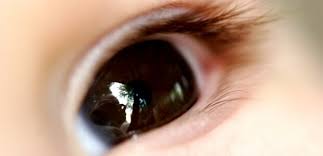Posted by Editor in Health and Wellness | Comments Off on Can Retinoblastoma be Treated?
Can Retinoblastoma be Treated?
Although retinoblastoma is a rare malignant cancer, it mostly affects children all over the world. In Singapore, it is the most common type of eye cancer, which accounts for half of such cases according to a study in 2000.
How Does It Start?
Like any type of cancer, the location of the cancer cells is important in the treatment approach. The location will also determine the likelihood of saving the person’s vision. Retinoblastoma can affect one or both eyes, but it rarely spreads from the eyes to other body parts. The illness affects children younger than 2 years because there is a fault in the process of eye formation while the baby is still in the womb. Retinoblasts or cells that are found during the formation of the eyes, do not mature into retinal cells, and instead keep dividing and growing uncontrollably. If not treated, the tumor can fill the eyeball, causing pressure, pain, and loss of vision.

Is it Related to Other Cancers?
Retinoblastoma begins in the retina, but the child can also be affected with another eye cancer or melanoma. This is rare, but the treatment approach will also be different if the child has other conditions that need to be addressed. The second most common eye cancer usually associated with retinoblastoma is medulloepithelioma, which begins in the eye’s ciliary body. Retinoblastoma can be inherited by the child and it has been found that the abnormality is associated with the mutation in the retinoblastoma gene, which can also develop sporadically.

How is it Treated?
There is no one treatment for retinoblastoma, because it must be approached based on its location, type, and the side effects. Most doctors recommend the usual treatments for most types of cancer such as cryotherapy, chemotherapy, thermotherapy, radiation therapy, surgery, targeted therapy, and stem cell rescue. A child with retinoblastoma will need a team of specialists who will make sure that the side effects of the treatments are minimized. There is also a risk of late side effects that will most likely affect the child as he/she grows up, such as; vision and hearing problems, memory and learning problems, and second cancers.

Can the Eye be Saved?
If the specialists can still save the eye, the person might have to go through systemic chemotherapy or an external-beam radiation therapy. If both eyes are affected, there might be different treatment approaches for each eye depending on the size of the tumor and the likelihood of saving each eye.
What is Enucleation?
One of the treatments for retinoblastoma is enucleation or surgery of the eye that aims to remove the affected eye and parts of the optic nerve. This is recommended if there is a suspicion that the caner cells have spread to other parts of the body or if the individual will most likely lose his/her sight. If the tumor is very large and the patient does not respond to other types of treatment, enucleation is also an option.

